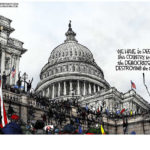 The 2018 mid-term elections shined a bright light on Republicans nation-wide attempts to suppress the votes of non-Republican voters. But unfortunately votes are not the only numbers Republicans are suppressing, they are also guilty of trying to commit population suppression.
The 2018 mid-term elections shined a bright light on Republicans nation-wide attempts to suppress the votes of non-Republican voters. But unfortunately votes are not the only numbers Republicans are suppressing, they are also guilty of trying to commit population suppression.

Population suppression is the act of not acknowledging or denying the existence of an ethnic, racial, religious, or immigrant class of people. Population suppression can be accomplished by 3 methods, 1) under-counting or not counting at all the presence in America of a designated class of people, 2) denying entry to America of a designated class of people, and 3) to expel or deport a designated class of people out of America.
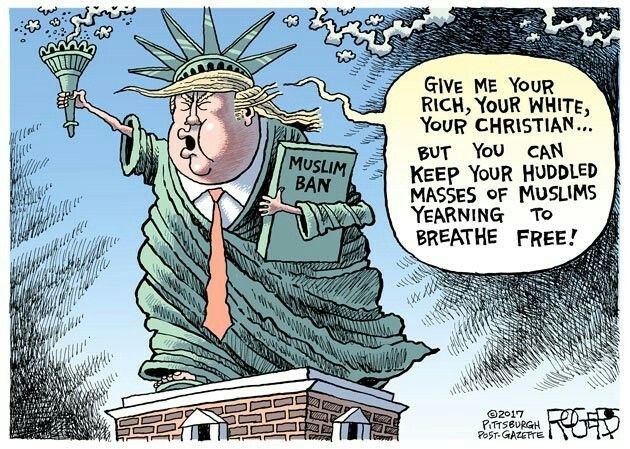
Republicans most vocal proponent of population suppression is President Donald Trump, his chief weapons for population suppression are his infamous “wall” and his immigration policies. His recent decision to send 5,000 American troops to the border with Mexico was more about mid-term election politics than population suppression, but a side effect of having military troops on the border could possibly be population suppression.
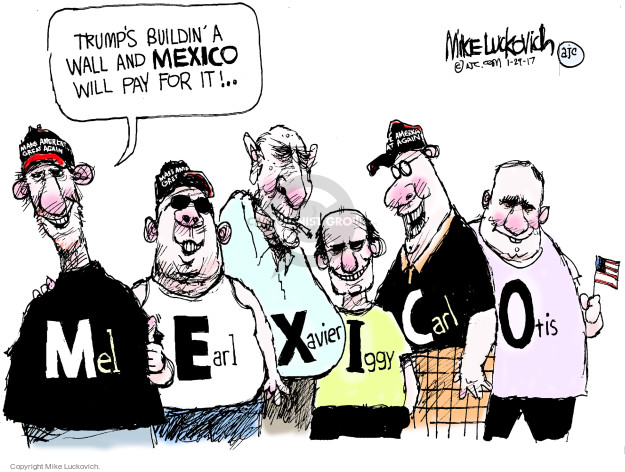
President Trump’s pledge that Mexico would pay for the wall turned out to be worthless so he now wants American taxpayers to pay for it
President Trump hasn’t been able to deploy his most famous weapon of population suppression, the wall, because he couldn’t convince a Republican-controlled House and a Republican-controlled Senate to fund it. So he has turned his focus to 2 other population suppression weapons, one well known the other not so well known.

Fortunately neither a Republican-controlled House or a Republican-controlled Senate would vote to make American taxpayers pay for President Trump’s wall
The well-known population suppression weapon is President Trump’s 2018 State of the Union address declaration to end what immigration opponents have successfully labeled chain migration. Chain migration, more humanely referred to as family-based immigration, is one of the main ways to immigrate to America. According to the Department of Homeland Security, about 7 million out of the nearly 11 million immigrants who obtained green cards from 2007 to 2016, did so through family relations.
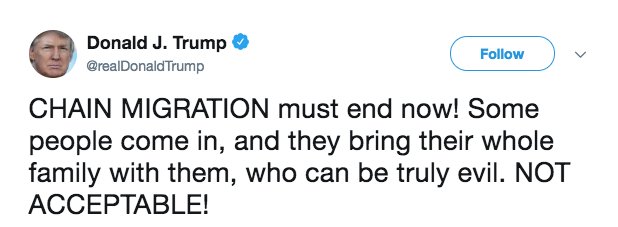
Under the current law, American green card holders can sponsor their spouses and unmarried children for permanent residence — just like naturalized and native-born citizens. United States citizens can also petition for residence for their parents, siblings and married adult children. Because there are yearly limits on family-based immigration there is a long line for visas. Since Nov. 1 of 2017, more than 3.9 million people were waiting in line.
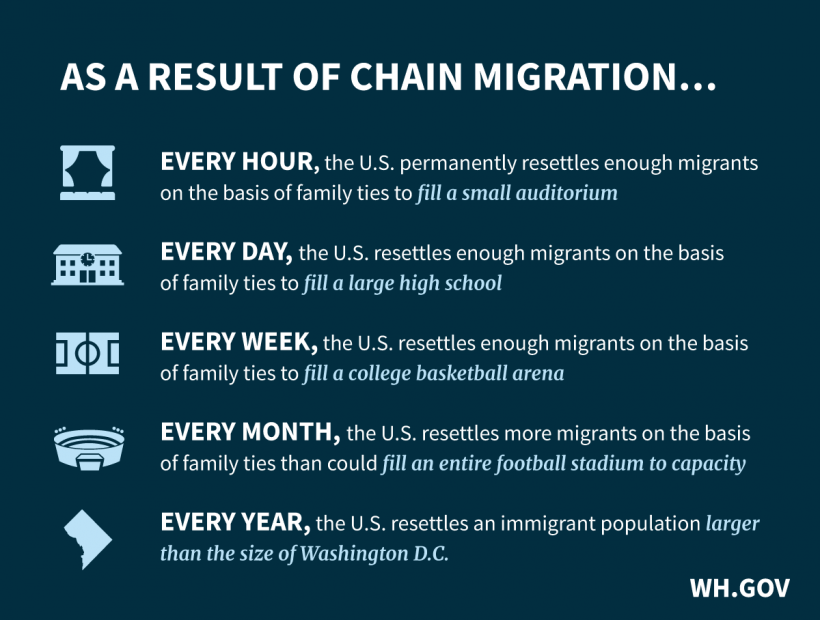
This is official anti family-based immigration rhetoric put out by the White House
If a sponsors’ petition is approved, the would-be immigrant would be given a ticket number called a “priority date” and could only apply for a green card when the State Department called their number. Depending on the country of origin, a sponsor’s immigration status and the applicant’s relationship to their sponsor, the waiting period can last from months to decades. In January 2018, most immigrants sponsored by their United States-citizen relatives could begin to apply for a green card if their priority date was before June 22, 2004, meaning they had a waiting period of 13.5 years before they could apply.

In his first year in office, President Donald Trump’s administration’s arrests of immigrants — especially those without criminal convictions — were up substantially
In other words, the current family-based immigration process with no interference from President Trump naturally contributes to population suppression, his “end chain migration” initiative seeks to increase the natural population suppression to the point where hardly any family-based immigrants could enter the United States. President Trump constantly says “chain migration” is bad for America but he apparently believes it is good for his family, since his Slovenian in-laws, the parents of First Lady Melania Trump Viktor and Amalija Knavs, came to America and became United States citizens in a private ceremony this past August by taking advantage of that same family-based immigration program that he claims is bad for America.

Melania Trump’s parents, Amalija (left) and Viktor Knavs (middle), flank their lawyer, Michael Wildes, heading to their naturalization ceremony in Manhattan, New York Holly Pickett for The New York Times
In 2016, 1.2 million immigrants received legal permanent residency visas known as green cards. Of those, 804,793 received green cards through the family-based immigration system compared with 137,893 through the employment-based system. Under President Trump’s plan, 317,661 of the family-based green cards would be eliminated based on an analysis of 2016 data by the Migration Policy Institute. That amounts to a 40% reduction in family-based green cards and a 27% reduction in overall immigration. In other words a 27% increase in population suppression of legal immigrants to America.

Senate Majority Leader Mitch McConnell and Senate Republicans have done their part to aid population suppression Adam Zyglis/Buffalo News
The 317,661 family-based green cards that would be cut break down like this, according to the Migration Policy Institute:
- Parents of U.S. citizens: 173,854.
- Adult or married children of U.S. citizens: 49,464.
- Adult or married children of legal permanent residents: 26,987.
- Siblings of adult U.S. citizens: 67,356.

If President Trump gets his way only spouses and minor children would be eligible for family-based immigration green cards, no longer would a citizen or legal resident be able to bring their parents to America. They would be denied the opportunity to reunite their family like President Trump’s wife Melania was able to do with her parents.

The other weapon of population suppression is not as well publicized as the weapon of ending family-based immigration policy as we know it today, this weapon of population suppression is being constructed by President Trump’s Commerce Secretary, Wilbur Ross. The weapon of population suppression that Secretary Ross has constructed and is attempting to put in motion is a question he intends to add to the 2020 census.

This is the welcome that Republicans and President Trump have in mind for non-European whites arriving in America
The population suppression question is the question of citizenship, Secretary Ross wants to ask all respondents who participate in the census count if they are American citizens. A question census takers stopped asking over 50 years ago. Ross said in sworn testimony to Congress last March that he was adding the question at the U.S. Justice Department’s request. But internal government documents produced in a lawsuit on the issue showed Ross pressured the Justice Department to request the citizenship question, not the other way around.

To those who question Ross’s motives, he denies that there is clear evidence that the citizenship question would deter people from filling out census forms, although the Census Bureau’s own researchers repeatedly have found just that. Four former census directors warned in a 2015 legal filing that adding a question about citizenship for all households would undermine the accuracy of the count. “The sum effect would be bad census data,” they wrote of the idea. “And any effort to correct for the data would be futile.” In testing for the 2020 Census, immigrant communities have expressed a heightened reluctance to answer the coming questionnaire, even without any mention of a citizenship question.

4 former Directors of the Census Bureau have stated that adding a citizenship question to the 2020 census will cause some people to give false information and others not to participate at all, both scenarios create false census data
Census researchers found that respondents in 2017 technology tests spontaneously brought up concerns about confidentiality and privacy at alarmingly high rates. In one test in the Washington area, four out of 15 people interviewed provided incomplete or inaccurate information because of those concerns, including several who mentioned fears that the data could be used by the government against immigrants. “This frightened me, given how the situation is now,” said one Spanish-speaking respondent, when asked to explain why she did not report three of the four roomers living in her residence. Immigrants don’t know and don’t believe that the federal government is barred by law from using raw, individualized census data for law enforcement.

It’s important that immigrants feel free to respond accurately to census takers for the adequate appropriation of federal funds. According to a 2014 Pew Research Center study of Census Bureau data, a majority of America’s undocumented immigrants live in 20 metropolitan areas. They number about 1 million in the New York and Los Angeles areas, 575,000 in Houston and 475,000 in Dallas. This makes urban political leaders, mostly Democrats, alarmed by the possibility of the citizenship question — primarily because census data helps guide the distribution of more than $675 billion a year in federal funding.

Because census figures determine where billions of dollars in federal funds are spent is one reason why Republicans are seeking to use them as a weapon of population suppression, but it’s not the only one. Census numbers also determine how the House of Representatives, the Electoral College, and other political districts are remapped every decade to reflect population changes. Because immigrants and minorities historically disproportionately vote for Democrats, not counting immigrants as part of the census count (population suppression), would help the Republican Party maintain political control when new political boundaries are drawn in 2021.

We forget that to Native Americans all of us, black and white, are immigrants
But the reality is census numbers determine more than just political control and appropriation of federal dollars. They influence business decisions by providing businesses with information on the location of potential customers and how much money they might have to spend. Public health officials use census data to understand the distribution of diseases in order to target interventions in at-risk communities. False census data could lead public health officials to invest in solving a problem that does not exist or to overlook one that does. And last but not least, census numbers provide Congress with the demographic projections necessary to allocate the money needed for future Social Security payouts.

No matter how hard President Trump and Republicans try to stop the browning of America its to late to stop it
Hopefully, the August blue wave of Democrats will put an end to the voter and population suppression weapons President Trump and Republicans are trying desperately to deploy. Failure to stop Republican population suppression attempts will create the same havoc as it has for our northern neighbor, Canada. The future economic, cultural, and social harmonious growth of American society depends greatly on ending population suppression!!!



